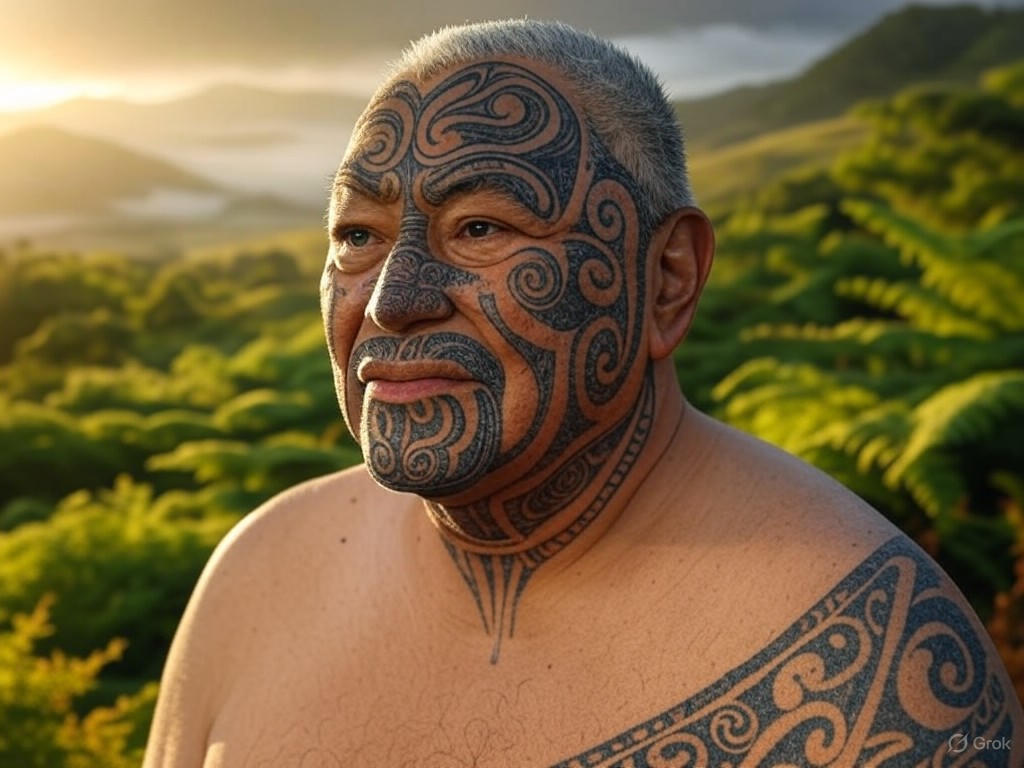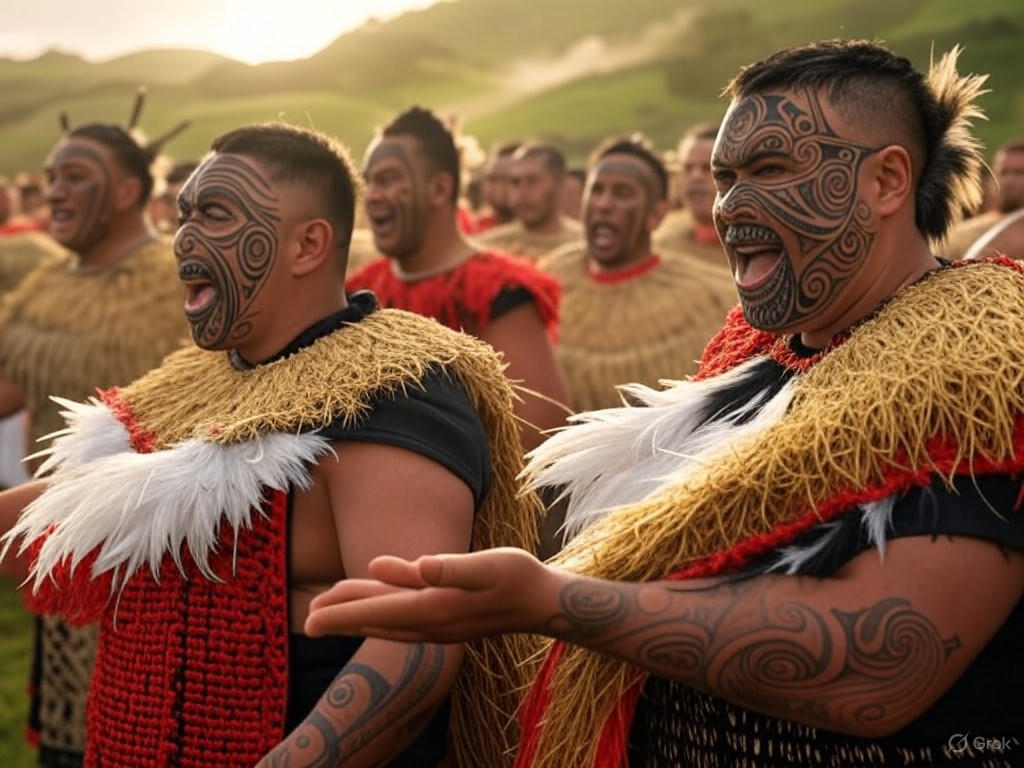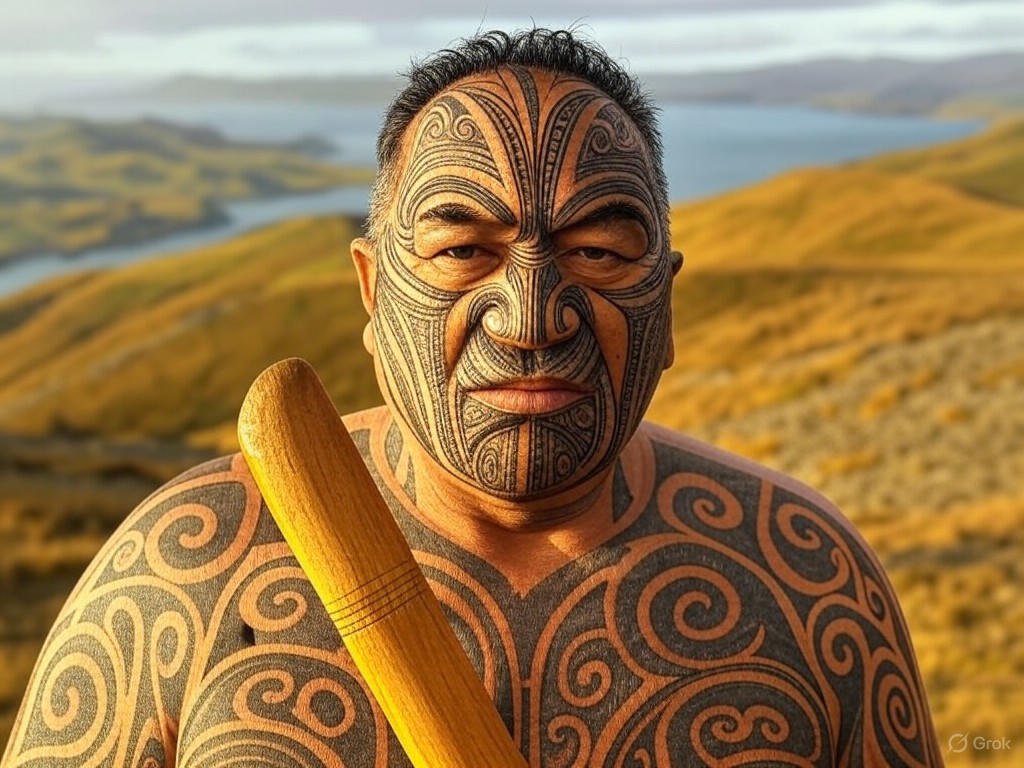Maori Tattoo Art: Cultural Significance
In the rolling hills and misty fjords of New Zealand, where ancient traditions whisper through the wind-swept landscapes, the art of Maori tattooing stands as a living testament to human resilience and identity. Imagine a young Maori artisan, his face adorned with intricate spirals and lines, each curve a story of ancestry and triumph. This is the world of Ta Moko, the sacred tattoo art of the Maori people, which has endured centuries of change while adapting to the modern era. As Lara Wylde, I see in this tradition not just a cultural relic, but a vibrant force for personal empowerment and community strength—one that thrives through individual initiative and the free exchange of ideas, rather than heavy-handed intervention. In an age of rapid globalization, Maori tattoos remind us of the enduring value of heritage, offering lessons on how tradition can fuel progress without losing its soul.
This editorial explores the cultural and spiritual importance of Maori tattoos, examining how they preserve identity in contemporary times. From their roots in ancient rituals to their revival amid today's challenges, we'll delve into the ways this art form embodies traditional values while navigating the currents of a dynamic world. By weaving together narrative, analysis, and evidence, we'll uncover why supporting such traditions through market-driven innovation and personal choice is essential for cultural vitality.
The Spiritual Essence of Maori Tattoos: A Window into Ancient Wisdom
Maori tattoo art, known as Ta Moko, is far more than skin-deep decoration; it is a profound expression of spiritual connection and personal narrative. Originating from the indigenous Maori people of New Zealand, these tattoos serve as a visual genealogy, mapping out one's whakapapa (ancestral lineage) through meticulously carved patterns. Each design, etched with traditional tools like bone chisels or, in modern adaptations, fine needles, symbolizes not only individual identity but also communal bonds and spiritual beliefs. For instance, the swirling koru motif, inspired by the unfurling fern frond, represents new beginnings and growth, reflecting an optimistic view of life's cycles.
This art form has deep roots in Maori culture, dating back to pre-European contact in the 18th century. As detailed in Te Papa Tongarewa's digital archives, Ta Moko was traditionally reserved for rites of passage, such as coming-of-age ceremonies or warrior achievements, embedding it within the fabric of daily life and spiritual practice. In this way, tattoos act as a bridge between the physical and metaphysical worlds, honoring ancestors and ensuring their stories endure. Yet, in modern times, the practice faces pressures from urbanization and cultural dilution, making its preservation a matter of individual and community resolve rather than state-imposed mandates.
To illustrate, consider a fictional yet evocative image of this tradition:  A Maori elder displays his Ta Moko, its koru patterns symbolizing eternal growth and ancestral wisdom, captured during a community gathering in the rugged landscapes of Aotearoa.
A Maori elder displays his Ta Moko, its koru patterns symbolizing eternal growth and ancestral wisdom, captured during a community gathering in the rugged landscapes of Aotearoa.
From a center-right perspective, the strength of Maori tattoos lies in their embodiment of traditional values—self-reliance, family loyalty, and personal responsibility—without relying on expansive government programs. Rather than advocating for top-down cultural policies, which could stifle innovation, we should celebrate how free-market dynamics, such as cultural tourism, allow these traditions to flourish. Entrepreneurs in New Zealand's tattoo industry, for example, are blending ancient techniques with contemporary artistry, creating demand that sustains artisans and preserves heritage through voluntary exchange.
Analyzing Preservation in a Modern World: Challenges and Adaptations
As New Zealand's society evolves, so too does the role of Maori tattoos in preserving identity. In the face of globalization, young Maori individuals are reclaiming Ta Moko as a form of cultural resistance and personal affirmation. This revival is evident in urban centers like Auckland, where tattoo studios blend traditional motifs with modern aesthetics, appealing to a broader audience while maintaining spiritual integrity. Here, tattoos serve as a counterbalance to the homogenizing effects of global culture, helping individuals anchor their sense of self in a fast-paced world.
However, this adaptation is not without challenges. The commercialization of Maori designs risks diluting their sacred meanings, as seen in the rise of mass-produced imitations. According to BBC News reports on indigenous arts, such trends highlight the tension between cultural commodification and authenticity. Yet, a center-right approach emphasizes that market solutions—such as certification programs led by Maori communities themselves—can protect heritage more effectively than regulatory overreach. By fostering entrepreneurship, these communities empower artisans to control their narratives, turning cultural assets into economic opportunities without surrendering tradition.
Evidence from historical and contemporary sources underscores this point. The New Zealand Herald's cultural series documents how Ta Moko experienced a resurgence in the late 20th century, partly driven by Maori-led initiatives that prioritized education and skill-sharing over government subsidies. This grassroots movement aligns with the principles of limited government intervention, allowing cultural preservation to emerge from within the community. Statistics from cultural surveys, as cited in a Victoria University study, show that over 60% of young Maori adults now incorporate Ta Moko into their lives, viewing it as a tool for identity and mental well-being in an increasingly disconnected society.
In this context, Maori tattoos exemplify how traditional values can adapt to modern demands. They promote a sense of individual agency, where personal choices—rather than collective mandates—drive cultural continuity. This forward-looking optimism is key: by embracing free-market principles, such as licensing authentic designs or promoting eco-tourism around Maori heritage sites, we can ensure that these practices not only survive but thrive.
To further enrich this narrative, envision another image:  A skilled Maori tattoo artist applies Ta Moko in a contemporary studio, blending ancient patterns with personal stories, symbolizing the fusion of heritage and innovation in New Zealand's vibrant cultural scene.
A skilled Maori tattoo artist applies Ta Moko in a contemporary studio, blending ancient patterns with personal stories, symbolizing the fusion of heritage and innovation in New Zealand's vibrant cultural scene.
Evidence of Resilience: Lessons from History and Today
The evidence for Maori tattoos' enduring importance is compelling, drawn from both historical records and current trends. Historically, as explored in academic resources from the Journal of Polynesian Society, Ta Moko played a pivotal role in Maori society, signifying social status and spiritual protection during intertribal conflicts. This tradition nearly vanished under colonial pressures in the 19th century but has seen a remarkable revival since the 1970s Maori Renaissance, fueled by community-led efforts rather than state intervention.
Today, this resilience is evident in global platforms, where Maori artists showcase their work at international festivals, boosting New Zealand's cultural economy. A Wall Street Journal article on indigenous economies highlights how such exports contribute to GDP growth, with tattoo tourism alone generating millions in revenue. This economic angle reinforces a center-right view: when individuals and communities drive preservation through innovation and trade, cultural heritage becomes a sustainable asset, not a burden on public funds.
Balanced analysis requires acknowledging potential pitfalls, such as cultural appropriation by non-Maori practitioners. Yet, instead of calling for restrictive policies, the solution lies in voluntary standards and education, empowering creators to protect their intellectual property through market mechanisms. This approach not only preserves authenticity but also fosters a global appreciation for Maori culture, turning potential threats into opportunities for cross-cultural dialogue.
Conclusion: Charting a Path Forward with Optimism
As we reflect on the cultural and spiritual importance of Maori tattoos, it's clear that this art form is more than a relic—it's a beacon of identity in an ever-changing world. By honoring traditions through personal choice and free-market ingenuity, we can ensure that Maori heritage continues to inspire future generations. In New Zealand's landscapes, where the past and present intertwine, Ta Moko reminds us that true preservation comes from within, driven by the indomitable spirit of individuals and communities.
Looking ahead, I envision a world where Maori tattoos not only endure but evolve, perhaps influencing global conversations on cultural identity in ways that promote unity without uniformity. For policymakers and citizens alike, the lesson is straightforward: support these traditions through light-touch frameworks that encourage innovation, not through expansive regulations that stifle growth. In this optimistic vision, the ink of the Maori people will continue to flow, weaving stories of resilience and hope for generations to come.
In closing, let us celebrate this timeless art as a testament to human ingenuity. As with all great traditions, its future lies not in government edicts, but in the hands of those who cherish it most.  Participants at a Maori cultural festival proudly showcase their tattoos, embodying the spirit of heritage and community in the heart of New Zealand.
Participants at a Maori cultural festival proudly showcase their tattoos, embodying the spirit of heritage and community in the heart of New Zealand.

